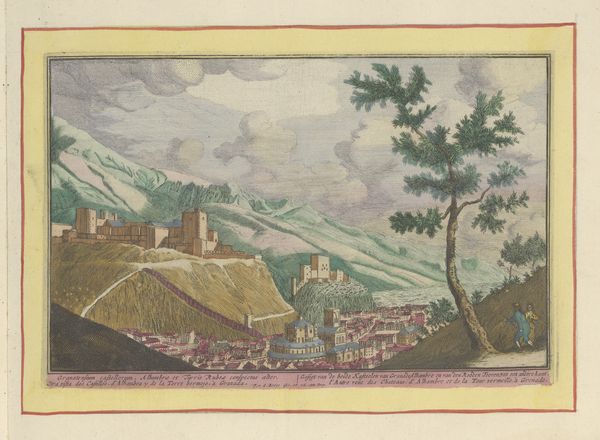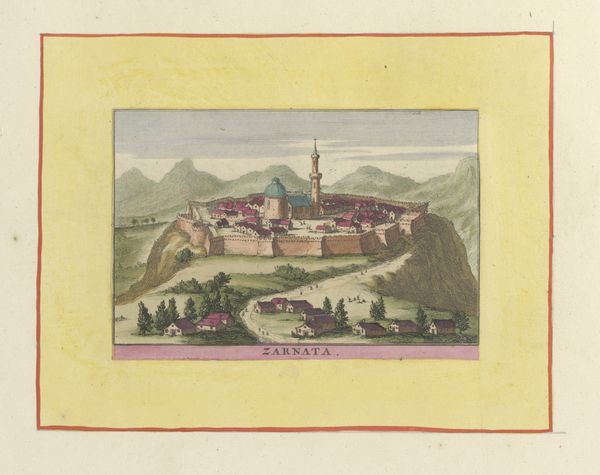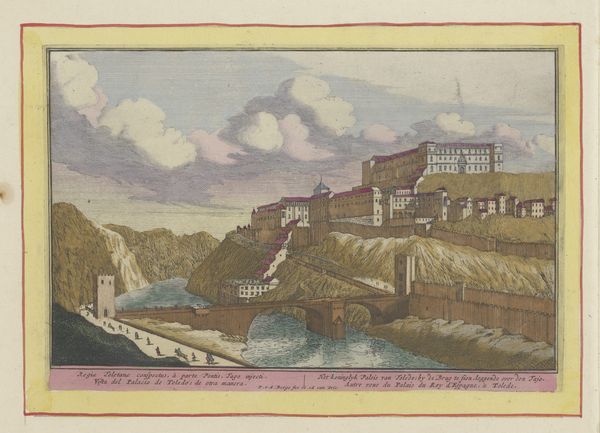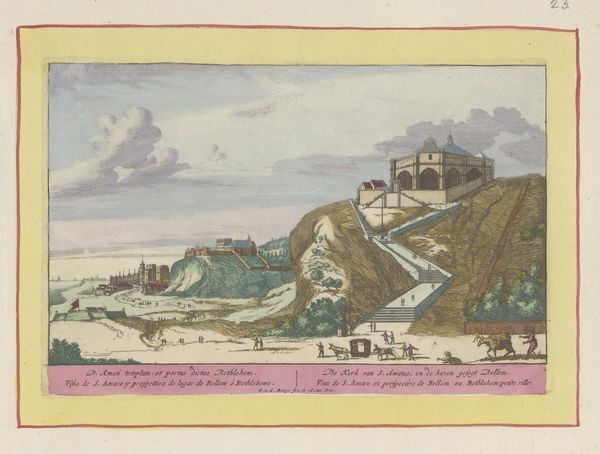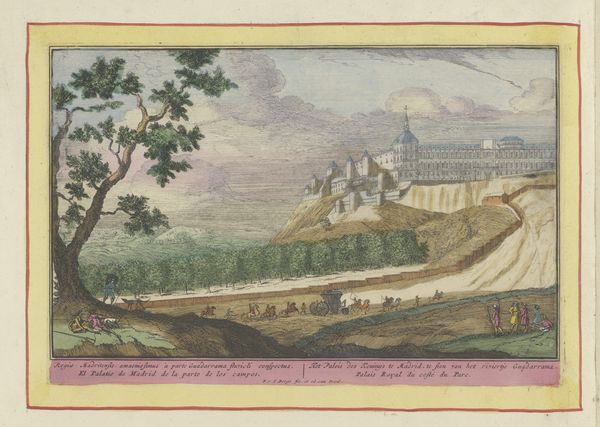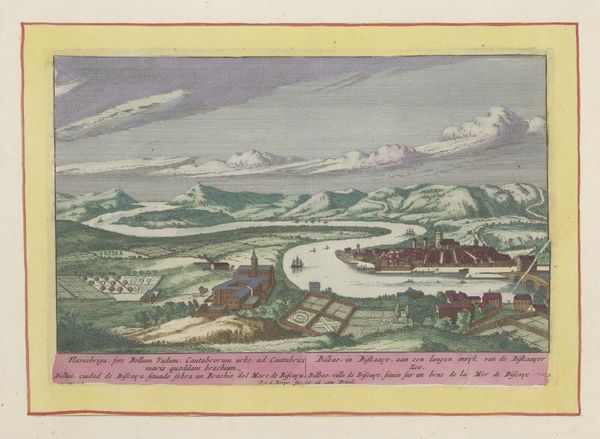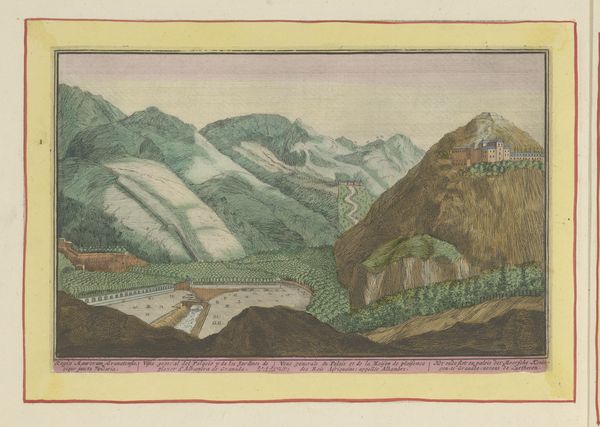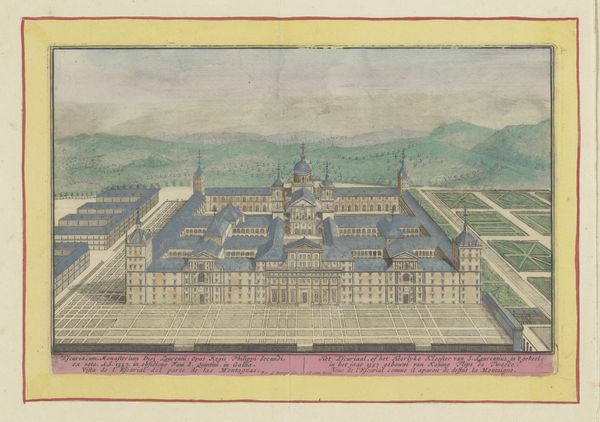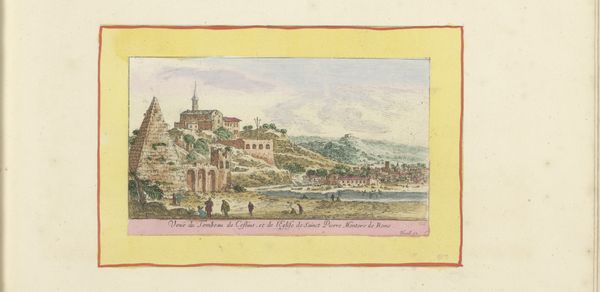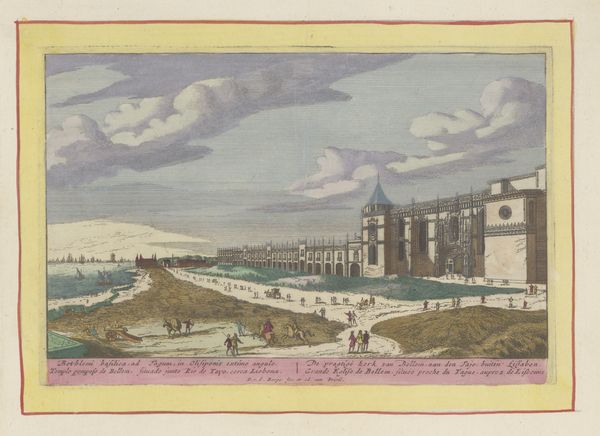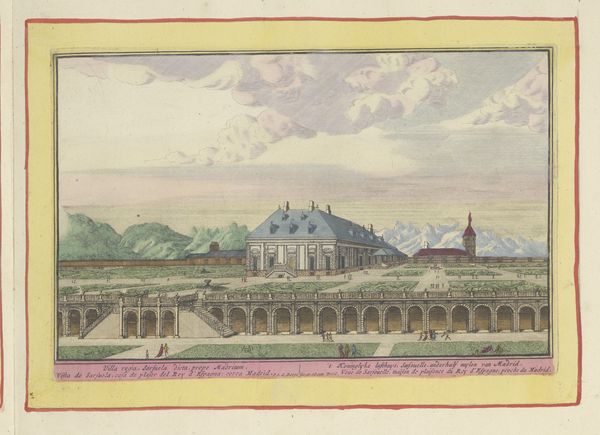
drawing, print, watercolor
#
drawing
#
water colours
#
baroque
# print
#
landscape
#
watercolor
#
coloured pencil
#
cityscape
#
northern-renaissance
#
watercolor
Dimensions: height 164 mm, width 253 mm
Copyright: Rijks Museum: Open Domain
Curator: We're looking at "Achteraanzicht van het Escorial," a watercolor drawing and print created sometime between 1694 and 1737 by Pieter van den Berge. The artwork, part of the Rijksmuseum collection, presents a rear view of the Escorial complex. Editor: It strikes me as quite formal, almost detached. The meticulous detail given to the architectural elements contrasts strangely with the soft, almost hazy depiction of the surrounding landscape. It’s as if the building is both grounded in and separate from its natural environment. Curator: Absolutely. Van den Berge captures not just a building, but a seat of power and faith intrinsically linked to Spanish royalty and religious authority. Think about the Escorial's complex history, conceived by Philip II, embodying both monastery and palace, church and state. Editor: Yes, and viewed from the back we aren't presented with a monumental facade, a controlled message, if you will. It's from the rear, the mountain looming behind, that we recognize a complex, contradictory identity – the institution, both imposing and dwarfed. The people riding on horseback in the foreground also emphasize the scale of the imposing palace behind. Curator: That is where the historical context becomes key. Representations of the Escorial were meticulously crafted. They presented Philip II’s vision, communicating power and piety across Europe. The choice of viewpoint—and the artistic license taken in depicting the mountains—contributed to that projection. Editor: It's interesting to note how landscape traditions have often played a role in visually reinforcing ideological narratives. Here, even what appears natural is deeply mediated. We, in viewing the artwork, have to challenge that mediated view. Curator: A worthwhile challenge, especially when considering the layered meanings embedded within such historical architectural portraits. Van den Berge gives us insight into not only the structure, but its place within the landscape of power. Editor: And ultimately how the rendering of that power still impacts our perception, inviting critique and hopefully a more comprehensive understanding of its legacies.
Comments
No comments
Be the first to comment and join the conversation on the ultimate creative platform.
